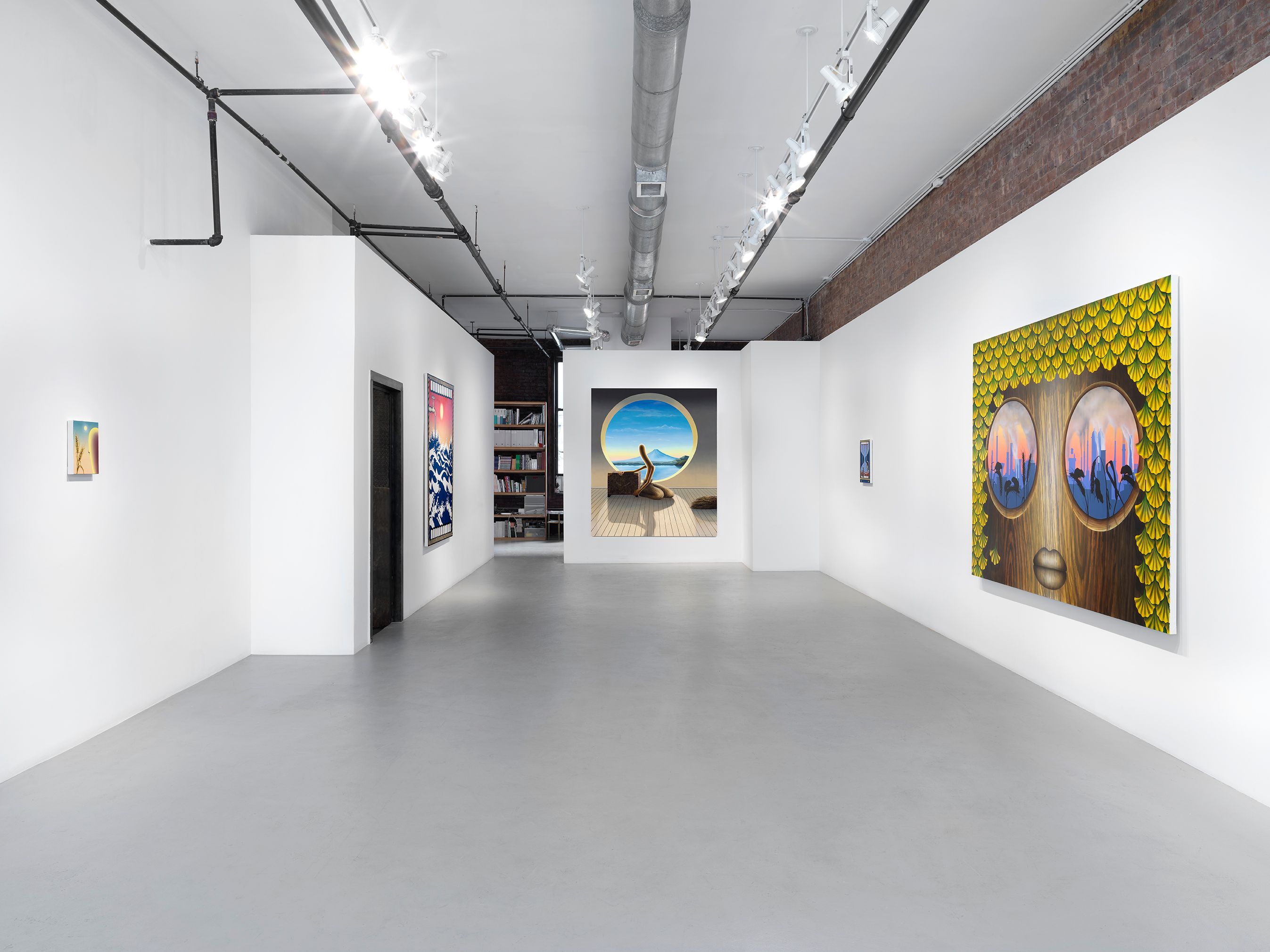Tangled in symbolism, Emily Mae Smith’s solo exhibition Kin interweaves totems and allegories that have marked her painting practice for over a decade. In Smith’s latest works, archaic tropes are often reconfigured to forward a sly feminist agenda. Evoking a feeling of deep time, the paintings in Kin reimagine age-old symbols of wheat, harvest mice, and ginkgo leaves; some of the oldest known surviving species on the planet. Meanwhile, in several instances throughout Kin, Smith’s illustrious anthropomorphic broom is shown undergoing a sweeping phase of reflection and self-reckoning within Smith’s Metarealist world.
Traditionally made from wood and straw, Emily Mae Smith’s “broom ladies” allude to conventional ideas that surround female-oriented domesticity and labor, as well as the disenfranchised broom character from Goethe’s The Sorcerer’s Apprentice (1797), popularized by Disney’s cartoon Fantasia (1940). Straw itself, an agrarian byproduct from the cultivation of wheat, is the least desirable part of the plant and is often discarded, an analogy which Smith has likened to the dismissal of female subjectivity throughout modern history. Stalks of wheat are bundled to the side in The Idle Servant (2020), bringing Millet’s Gleaners (1857) painting to mind. Millet depicts his subjects performing the final stage of agrarian labor; women painstakingly sift through straw debris, searching for the very last pieces of wheat stalk worthy enough to sell or eat. Smith’s servant subject, however, showcases a contrasting motif of lazy or misbehaving servants and maids commonly found in Western 17th century paintings. Although perhaps tempted to open Pandora’s box, Smith’s servant is mostly idle, yet this very indolence is a radical moment of rebellion, rife with explosive capability much like the dormant volcano pictured through an ocular window. A wheat motif reappears in Ilk and Honey (2020), this time infested with pestilent harvest mice. The nimble rodents are playful and mischievous, and much like the servant, their disobedience puts into question the rules of normative, patriarchal systems.
Originating in Asia, the hardy ginkgo has become a ubiquitous urban tree in many American cities. In fall, the leaves and berries of female ginkgo trees drop, often all at once, and emit a powerful, acrid smell. This feminine energy is biologically designed to make its presence known. Commonly called maidenhair, fallen ginkgo leaves frame the face like bangs in Smith’s multi-layered Hair Horizon World (2020). Through the eyes and perhaps skull of this ginkgo girl, we see through to a landscape wrought with modern industry and smoke billowing across an unsettlingly amber sky.
The subjects in Smith’s paintings often appear backlit, an unusual painterly effect known as contre-jour (Fr. against daylight). This formal style creates the voyeuristic feeling of looking over someone’s shoulder, implying a literal shift in perspective between subject and viewer. Large circular windows and orifices act like eyes, and the faces in Smith’s paintings become semipermeable membranes: depending on the vantage point, a viewer can see into the mind of a subjective consciousness, or see the world through it. The exhibition’s eponymous painting, Kin (2020), depicts our trusty broom confronting a single stalk of wheat, perhaps coming to terms with its own fraught existence. As a whole, Kin exemplifies moments of unapologetic resiliency, and an unknown potential on the edge of brimming over.









































































































